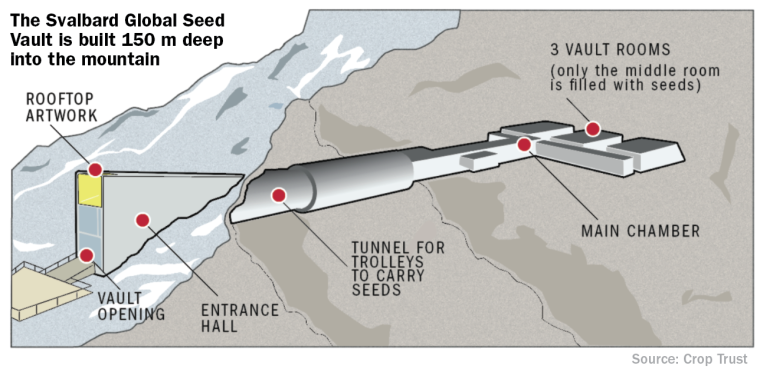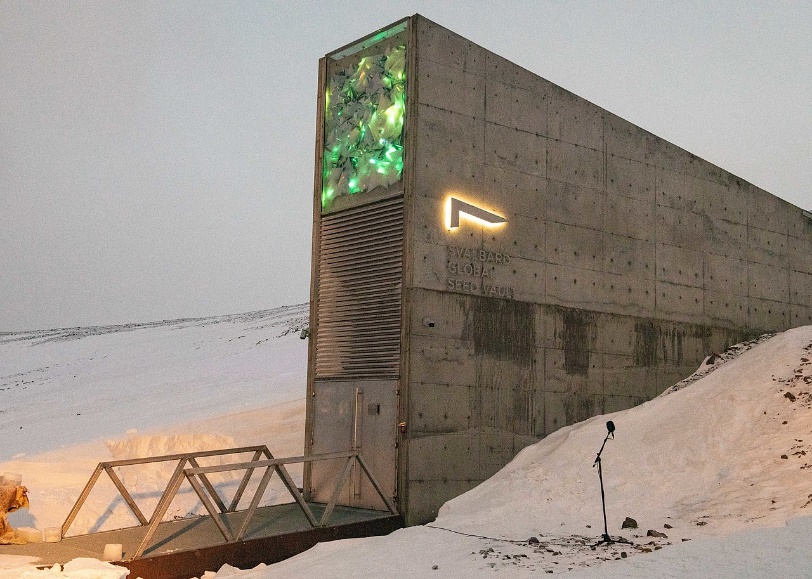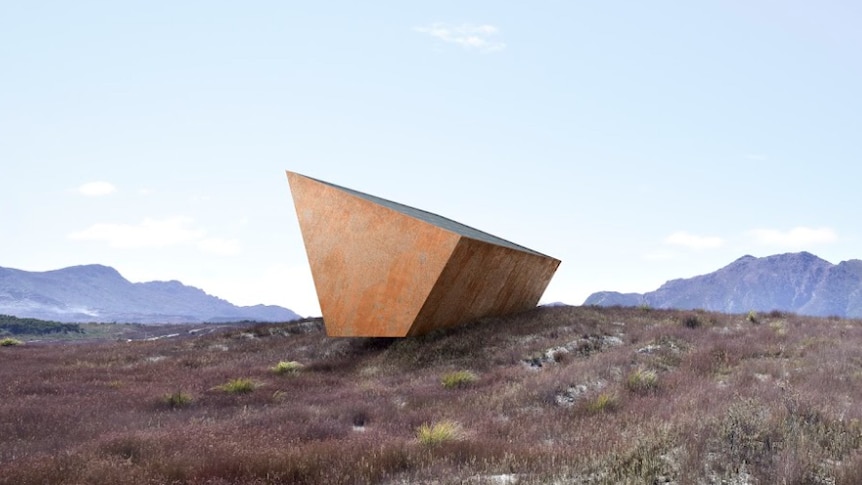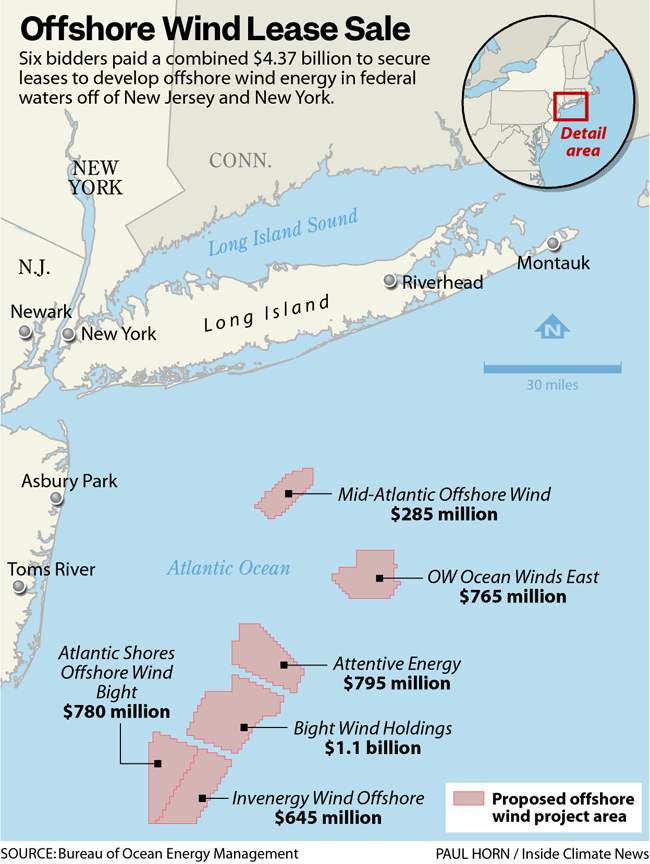Doomsday Vault, the Black Box and Renewables: Quite A Mix
As we grapple with climate change with all of its implications., some far sighted countries and individuals have interesting projects underway. While some of our leaders can’t seem to “lead” us out of this situation, other groups are taking the initiative to “do something.”
There are vaults and then again, there are vaults. This one is not the kind one puts money into, and that has a massive metal door to keep the bad guys out. Nor is it a gymnastic routine. No, this vault is designed for storing something extremely valuable: seeds and the precious germ plasm and DNA contained therein.
This is the “Seed Vault” built in and by Norway. As it so happens many countries around the world collect seeds for storage against manmade and natural disasters. These seeds are literally the results of thousands of years of genetic selection by us for characteristics that enable mankind to grow the food we require. Free of charge, countries can store samples from their own collections in this Global Seed Vault safely.
Let’s look at what the Norwegians, with support from the other Scandinavian countries, have accomplished that could benefit all of us.
First one must travel to the Norwegian island of Spitsbergen located in the Arctic Svalbard archipelago. Note the map showing its location north of mainland Norway, to the east of Greenland and some 700 miles north of the Arctic Circle. This same map shows Ireland and Great Britain to the southwest of Norway with Russia to the east.
This site was chosen because it is stable geologically, is in the permafrost zone, and temperatures inside are kept at about 0 degrees F which is the internationally recommended standard for storage. The vault is built some 500 feet into a mountain using an old mine shaft.
See illustration/schematic showing the entrance, tunnel, chamber and room storage areas of “The Svalbard Global Seed Vault …”

Constructed in 2008 and funded entirely by the Norwegian government, it began to receive and store seed samples from some 100 plus countries at no charge. And none to soon. Floods in the Philippines destroyed its gene bank collection; and civil wars in Syria, Iraq and elsewhere have destroyed their collections.
Norwegian law has prohibited the storing of genetically modified seeds in the vault. Norwegian law also requires that major public works projects also have an art component. The photo here of the entrance shows the backlighted and illuminated art installation which uses prisms, reflective steel and mirrors.

Sometimes called the “Doomsday Vault” the collection now numbers over 1 million crop samples representing some 13,000 years of agricultural history protected against climate change, war and other disasters.
Not to be outdone, a group in Australia also has plans to preserve, but this time it is a record of climate history in the event of a “Climate Crash.” It is named the Earth’s Black Box after the flight recorders on airplanes that help investigators understand what may have caused a plane crash. Here, it will create an archive of climate data, climate change indicators, climate news, peer-reviewed scientific papers, political steps or missteps taken, and technological advances developed and utilized, or not. It will hold our leaders accountable and record our actions for future generations.

The box would have three-inch thick steel walls and store data on a giant, automated solar-powered hard drive. The approximate size of a school bus, a site in Tasmania off the Australian south coast has been chosen for its placement. It would have capacity to collect and store about 50 years of data.
Construction is scheduled to start in 2022 and be completed by the end of the year. Many details are still to be worked out.
On another, somewhat different note, upcoming wind turbine projects have been in the news recently. The U.S. government has auctioned leases in a record-breaking sale off the east coast of the United States [NY and NJ]. The total of $4.37 billion in lease sales cover almost a half million acres of ocean and the value is 10 times larger than the previous record for an offshore lease.
See map by Paul Horn/Inside Climate News [ICN], titled “Offshore Wind Lease Sale”.

There are five wind project areas indicated on the map which can support development of about 7,000 megawatts of wind and generate about 25 terawatt-hours of electricity per year. While this is an enormous amount of power, as a point of reference, it represents about one-fifth of the total amount of all power generated in NYS in 2020.
The sale was managed by the Bureau of Ocean Energy Management [BOEM] and 5 of the 6 winning bids are from companies based in Europe which illustrates the dominance by European companies in the offshore wind industry. Two European oil companies [Shell and TotalEnergies] were among the winners.
Let’s keep moving; we have lots of work to do.
And so it goes.
The scientific career of Raymond N. Johnson, Ph.D., spanned 30 years in research and development as an organic/analytical chemist. He is currently founder and director of the Institute of Climate Studies USA (www.ICSUSA.org). Climate Science is published monthly.



